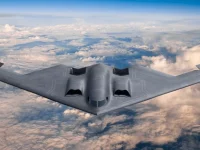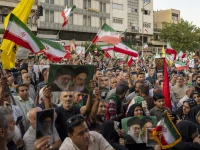Middle East. Opec under siege as Isil threatens world’s oil lifeline

OPEC. As the bloc’s 12 oil ministers meet in Vienna, the march of Isil jihadists in the Middle East is putting Iran and Saudi Arabia on a collision course with explosive consequences
Thick black smoke rising from the Baiji oil refinery could be seen as a dirty smudge on the horizon as far away as Baghdad after fighters from the Islamic State of Iraq and the Levant (Isil) set fire to the enormous processing plant just over 100 miles north of the capital last week.
The decision to torch the refinery, which once produced around a third of Iraq’s domestic fuel supplies, was made as the insurgents prepared to pull out of Baiji, which they captured last June in a victory that sent shock waves across world oil markets.
• ‘We fought the British, now we want their support against Isil’
A year on from the start of the siege and a shaky alliance of the Middle East’s major Arab powers, with the limited support of the reluctant US government, has failed to contain the expansion of Isil.
The problem for the US and the rest of the industrialised world is that the Middle East controls 60pc of proven oil reserves and with it the keys to the global economy. Should Isil capture a major oil field in Iraq, or overwhelming the government, the consequences for energy markets and the financial system would be potentially catastrophic.
Many of the countries most threatened by the onslaught of the extremist group, which has grown out of the chaos of Syria but was initially dismissed as a wider threat to regional stability, will gather at the end of this week in Vienna for the meetings of the Organisation of the Petroleum Exporting Countries (Opec).
Iraq, Saudi Arabia, the Gulf states and Iraq – which together account for two thirds of the cartel’s production – are all now affected by the inexorable march of the Isil jihadists but appear powerless to prevent it due to the widening sectarian schism between the Sunni and Shia Muslims across the region in the wake of the Arab spring uprisings five years ago.
Oil ministers gathering to decide on production levels at Opec’s secretariat building in Vienna will normally stay clear of wider geopolitical issues during their deliberations in the Austrian capital. However, the threat posed by Isil and its brutal brand of Islamist extremism is likely to force politics onto the agenda. It certainly can no longer be ignored.
According to Daniel Yergin, the energy expert and vice-chairman of IHS, the business information provider, the biggest threat to oil prices is the political chaos that threatens to engulf the Middle East, combined with the West’s reluctance to intervene.
Speaking to The Sunday Telegraph, Mr Yergin argued that the price of a barrel of oil could skyrocket to levels above $100 per barrel if Isil is allowed to press deeper into Iraq, the second-largest producer in the cartel after Saudi Arabia.
“Isil presents a whole new reality for the region, which just isn’t reflected in the oil market at the moment,” said Mr Yergin. “It’s an increasingly grave situation for most of Opec and the Middle East. At some point the security issues will start to come back into the price of oil.”
Up to this point, oil markets have shrugged off the risk of a major supply disruption caused by the worsening security situation. Traders have remained focused on the market fundamentals that almost 2m barrels per day (bpd) of excess oil capacity will be more than enough to absorb any supply-driven shock. A rally in the price of Brent crude – a global benchmark – which began in January and saw prices push close to $70 per barrel has lost momentum amid signs that higher prices could revive drilling in the US. Just over six months ago when Opec’s 12 oil ministers last met in Vienna the cartel decided to continue pumping oil at a level of around 30m bpd, which effectively fired the first shots in an oil price war against shale drillers in North America, and Russia.
After almost a decade of oil prices ticking along at above $100 per barrelduring which the group ignored the shale revolution taking place in the US, Opec decided to act last November. Under massive pressure from its most powerful member Saudi Arabia, the cartel allowed market forces to drag down oil prices. Initially, the strategy worked.
Within a month, oil prices had fallen to multi-year lows below $50 per barrel, sharply lower than the $115 year-high achieved last June when concern over the civil war in Syria caused a spike in prices. The sudden downturn in prices immediately had the desired effect on oil producers outside the Opec cartel.
In the US, oil companies began to shut down drilling rigs at a record rate. According to Baker Hughes, rig numbers have fallen for 24 straight weeks to 659 rigs as of last week compared with a record 1,609 rigs operating last October. In high-cost production areas such as the North Sea the impact of Opec’s decision to allow oil prices to fall naturally has shaken the industry to its core.
In his last budget of the Coalition government, George Osborne was forced to offer North Sea oil companies tax breaks to soften the blow of lower prices, while hundreds of jobs have been lost in Aberdeen.
“Opec has embarked on a strategy of leaving the oil price to the market and is willing it seems to allow the economics of supply and demand to take effect,” said Mr Yergin. “What is so startling is that geopolitics has been stripped out of the oil price for now but sooner or later it will be factored back in.”
Oil prices have gained roughly 30pc since the beginning of the year to trade at around $65 per barrel, with major banks and trading houses. However, traders have so far ignored the risks posed by Isil now to oil supplies, or the danger of a major terrorist attack on oil facilities in Saudi Arabia. Goldman Sachs has instead forecast that prices could again fall to $45 per barrel by October as US shale drilling picks up.
According to Mr Yergin this analysis ignores the dire political situation in the Middle East and the US government’s reluctance to acknowledge the danger to the wider global economy. Many of these analysts have focused on the continuing glut of new oil supplies from Saudi Arabia and Iraq. Both nations appear to be fighting for greater market share by filling the gap that is opening up in the oil market as higher cost production is shut down.
Swing producer Saudi Arabia is now pumping more than 10.3m bpd of crude, a record for the kingdom which maintains the capacity to produce up to 12m bpd if required. Despite the encroachment of Isil, which now controls the country’s largest province, Iraq has also dramatically increased its oil production over the past six months.
Iraq is poised to lift its exports by as much as 800,000 bpd to around 3.75m bpd next month as the government in Baghdad desperately tries to increase its revenues, which have been crippled by falling prices. In either case, a major terrorist attack on oil export facilities would shatter confidence and the notion that $100 oil is a thing of the past.
Although most of Iraq’s major oil fields are located in the south of the country, which are Shia Muslim heartlands, the failure of the Iraqi army to deal with the threat of Isil is a sign of their vulnerability to isolated attacks. Meanwhile, Saudi Arabia is in a virtual state of lockdown after the bombing by Isil militants of a Shia mosque in the oil-rich Eastern Province. The brutal attack, which appeared designed to provoke sectarian unrest in the kingdom, killed 21 worshippers and injured 80 others.
Saudi authorities have stepped up security at the country’s vast oil installations. The kingdom, which accounts for 12pc of global oil supply, is effectively under siege. To the north, jihadists threaten its borders from Iraq and Syria. In the south it launches air strikes against Iranian backed Houthi rebels in Yemen but has so far failed to defeat the tribes, which have continued to make territorial gains.
To add to the problems facing Saudi Arabia’s new ruler, King Salman bin Abdulaziz al-Saud, his kingdom is also facing insurgency from the so-called Al Qaeda in the Arabian Peninsula terrorist group which is intent on destabilising the regime.
Against this cataclysmic backdrop of bombs falling in Sana’a and with Isil literally at the gates of the major Iraqi city of Ramadi, many US energy and security experts were shocked to hear President Barack Obama ignore the danger in a recent keynote speech in which he pinpointed global warming as an equally big risk for Americans.
“Climate change constitutes a serious threat to global security, an immediate risk to our national security,” warned Mr Obama in a speech that many have criticised as symptomatic of the administration’s desire to disengage from the region which still provides a significant share of its oil.
Despite the growing focus on climate change and the campaign to limit fossil fuel production, Isil will be a bigger concern for the majority of oil ministers around Opec’s table next week.
The Obama administration’s reluctance to intervene marks the end of a US policy to protect the region’s oil which has remained in existence since President Franklin D Roosevelt first met with modern day Saudi Arabia’s founder King Abdulaziz in 1945. It was this commitment that drew America into the first Gulf War in 1991 and again in 2003 when it decided to bring down the curtain on Saddam Hussein’s regime.
However, Mr Obama’s lack of a viable alternative foreign policy for the region has put world energy markets at risk.
“How US national and foreign policy will integrate itself again with the region is unclear,” said Mr Yergin.
Washington’s determination to pursue a nuclear deal with Iran has arguably destabilised the region by placing Riyadh and Tehran on a collision course. Saudis are dismayed that Iranian military advisers are aiding the assault to recapture Ramadi, a city in Iraq’s Anbar Province which US forces fought so hard to secure 10 years ago.
Although Opec makes it a rule to stay away from politics, tensions between its 12 members are never far from the surface when they gather in Vienna. The organisation is one of the only remaining inter-governmental settings outside the United Nations where senior Saudi and Iranian officials can sit down together, which makes next week’s gathering potential dynamite.
Iran opposed Saudi Arabia last November when the kingdom’s oil minister, Ali al-Naimi, insisted that the group should stand on the side lines and allow market forces to drive down the oil price in order to render high-cost oil such as US shale unprofitable. Years of sanctions have crippled Iran’s economy and eroded its oil industry, which has added to pressure on the regime to agree to a nuclear deal with America under any terms. However, Iran needs oil prices above $100 per barrel in order to support its Shia Muslim allies, including the Houthis fighting Saudi Arabia in Yemen, in the wider Middle East.
Insiders say Saudi Arabia will get its way once again in Vienna and expect Opec to agree to “roll over” their production settings. With vast foreign currency reserves Riyadh and its Arab allies in the Persian Gulf can weather the storm better than Iran, while the continuation of lower oil prices will limit Tehran’s ability to support Saudi’s enemies in Yemen.
The danger is that Isil has other plans.










